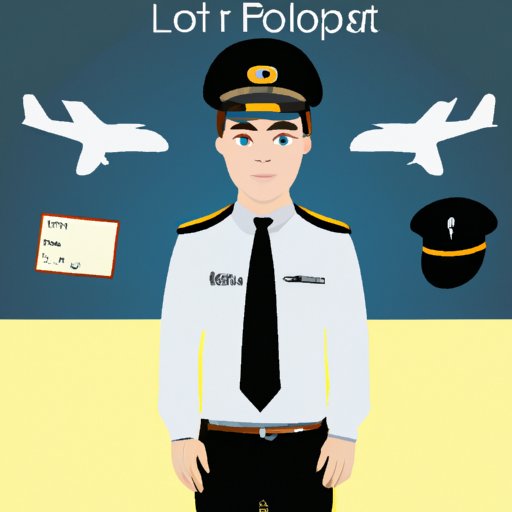Introduction
Becoming a pilot is an exciting and rewarding career choice, but it also requires a significant financial investment. The total cost of becoming a pilot will vary depending on the type of aircraft you choose to fly, the necessary training and education, and the various other costs associated with earning your license. In this article, we’ll explore the different components of the financial investment required to become a pilot, so you can make an informed decision about whether or not this career path is right for you.

Breaking Down the Cost of Flight School and Licensing Requirements
The first step in becoming a pilot is obtaining your Private Pilot License (PPL). To do this, you’ll need to complete 45-60 hours of flight instruction and pass a written exam. According to research conducted by the Aircraft Owners and Pilots Association (AOPA), the average cost of flight training for a PPL is around $9,000. This includes the cost of instruction, rental fees, fuel, and any other expenses associated with flight training.
In addition to flight training, you’ll also need to pay for the necessary licensing exams. The FAA requires pilots to take three separate tests: the Private Pilot Knowledge Test, the Private Pilot Practical Test, and the Medical Certificate Exam. The cost of these exams can range anywhere from $150-$500, depending on the location.
Exploring Different Types of Aircraft and Their Associated Costs
Once you’ve earned your PPL, you’ll need to decide which type of aircraft you want to fly. The cost of purchasing or leasing an aircraft will depend on the type of plane you choose. For example, a single-engine airplane will typically cost anywhere from $50,000 to $200,000, while a multi-engine plane can cost up to $1 million. Additionally, if you lease an aircraft, you may be responsible for paying monthly rental fees.
In addition to the purchase or lease price, you should also consider the operating costs associated with each type of aircraft. Fuel, oil, and maintenance costs can vary significantly from one type of aircraft to another. For example, a single-engine Cessna 172 typically burns around 10 gallons of fuel per hour, while larger commercial jets can burn hundreds of gallons per hour. Therefore, it’s important to factor in the operating costs of each type of aircraft before making your decision.
Examining the Cost of Flying Equipment, Insurance, and Maintenance
In addition to the costs associated with purchasing or leasing an aircraft, there are also several other expenses that must be taken into account. You’ll need to purchase aviation equipment such as headsets, navigation charts, logbooks, and other accessories. Depending on the type of equipment you choose, these costs can range anywhere from $500 to $5,000.
You’ll also need to carry insurance for both yourself and your aircraft. The cost of insurance will depend on the type of aircraft you fly and the amount of coverage you choose. Generally speaking, the more expensive the aircraft, the higher the insurance premiums. Additionally, you’ll need to budget for regular maintenance and repair costs.

Analyzing the Overall Financial Investment Required to Become a Pilot
When considering the overall cost of becoming a pilot, it’s important to remember that the initial investment is only the beginning. Once you’ve earned your license, you’ll need to budget for regular flight training, aircraft maintenance, and insurance costs. In a study published by AOPA, the average cost of owning and operating a single-engine airplane was estimated to be around $7,000 per year.
Fortunately, there are several ways to minimize the cost of becoming a pilot. Many flight schools offer financing options for students, and some even offer scholarships. Additionally, you can save money by joining a flying club, which allows members to share the cost of renting and maintaining an aircraft. Finally, make sure to shop around for the best deals on insurance and aviation equipment.
Conclusion
Becoming a pilot requires an investment of both time and money. Flight school and licensing fees, aircraft purchase or lease costs, and the cost of flying equipment, insurance, and maintenance all add up quickly. However, with careful planning and budgeting, it is possible to become a pilot without breaking the bank. By understanding the various components of the financial investment required to become a pilot, you can make an informed decision about whether or not this career path is right for you.
(Note: Is this article not meeting your expectations? Do you have knowledge or insights to share? Unlock new opportunities and expand your reach by joining our authors team. Click Registration to join us and share your expertise with our readers.)
